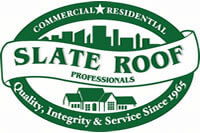With spring on its way and the home improvement season approaching, many homeowners may be wondering if it’s time to replace their shingle roof. Here are key things to look out for when determining if it’s time to invest in a new roof.
Consider the Expiration Date
No roof can last forever, no matter the level of quality. Though it does partially depend on the weather where you live, the average shingle roof will last about 20 years, while tile roofs can last 30+ years.
Even if you can’t identify visible damage, your roof will likely be ready for replacement once it’s at the end of its recommended lifespan. Plus, replacing your roof on time will save you from the headache of handling issues caused by roof damage later.
Visible Damage on Your Shingle Roof
Your roof is there to keep your home dry and shielded from the elements. However, exposure to heavy rain, winds, snow, and extreme temperatures over time can cause damage to shingles that prevents your roof from fully protecting your home. Roof damage leaves your roof and home susceptible to leaks, rot, and water damage. Identifying any of these common roof issues or having them confirmed by a professional roofer will indicate to you that your shingle roof needs to be replaced.
Types of damage to look out for that may signal it is time to replace your roof include:
- Wind damage – High winds may move shingles out of place or blow them off your roof entirely.
- Curling – If shingles were not installed properly or your roof is far past its expiration date, shingles may begin to curl up around the edges.
- Cracking – Shingles or tiles may crack, and more than a couple of cracks may indicate that it’s time for a new roof.
- Missing granules –The top layer of granules on shingles will naturally wear away over time. Keep an eye out for granules collecting in gutters or large bare spots on shingles.
- Shiny appearance – this is due to the fiberglass fibers within asphalt shingles breaking down and reflecting sunlight.
Interior Damage
A damaged roof can lead to considerable interior damage to your home. If you are finding evidence of leaks, rot, or other water damage in walls or other structures inside your home, there is a chance these issues are emanating from a damaged roof. If this is the case, it may be time for a replacement.
Shingle Roof Replacement
You have options when it comes to replacing your shingle roof.
- If the damage is cosmetic and surface level, and there is only one layer of shingles, you may opt for an overlay. This is when a new layer of shingles is installed directly over the old roof, cutting down labor costs and installation time. However, you’ll want to be sure there’s no underlying damage, as this method doesn’t allow for inspection of sheathing underneath.
- If your roof is more heavily damaged and an overlay won’t be an effective fix, you’ll want to go for a full tear-off of your old roof. By tearing away all old shingles, your roofer will have access to the sheathing, enabling the roofer to identify and repair damages before covering them up with a fresh roof. Although this method is costlier, it will save money in the long run by identifying issues that would have gotten much worse if left unattended.
If you have identified that your roof is ready to be replaced, or you need the opinion of a roofing professional, Slate Roof Professionals are here to help. From inspection to shingle selection to installation, our roofing experts will ensure your new roof is of the highest quality. Don’t hesitate to contact us for a quote or consultation!


